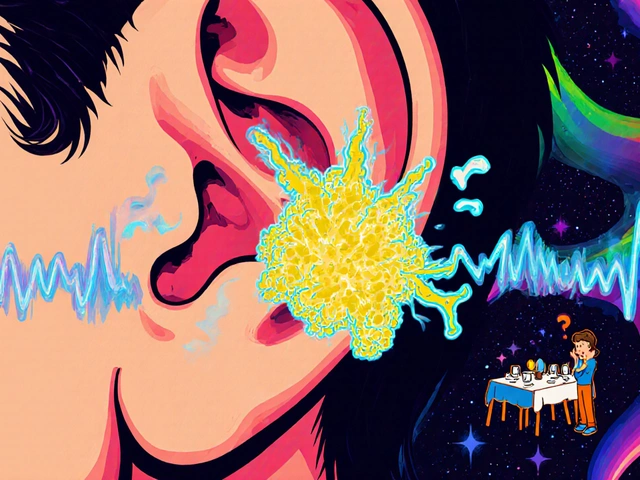Sensory Processing – What You Need to Know
If you ever feel overwhelmed by bright lights, loud sounds, or busy textures, you’ve probably experienced sensory processing challenges. It’s not just “being picky”; it’s how your brain interprets information from the senses. When that system gets stuck, everyday moments can become stressful.
What Is Sensory Processing?
Sensory processing is the brain’s way of sorting signals from sight, sound, touch, taste, and smell. Most people notice these cues without thinking about them. For some, however, the brain over‑reacts (sensory overload) or under‑reacts (sensory seeking), leading to discomfort or risky behavior.
Typical signs include avoiding certain fabrics, covering ears in noisy places, craving strong movement, or feeling “shaky” after a busy day. These reactions often show up in kids at school but can continue into adulthood.
Practical Tips to Manage Sensory Challenges
First, figure out your triggers. Keep a short diary of moments when you feel overwhelmed and note the environment, sounds, smells, or textures involved. Spotting patterns makes it easier to plan ahead.
Second, create a sensory diet—small, scheduled activities that give your nervous system the input it needs. This could be a 5‑minute walk, a brief stretch, or using a weighted blanket while watching TV. The goal is balance, not exhaustion.Third, use simple tools at hand. Noise‑cancelling headphones, sunglasses with UV protection, or a soft‑fabric shirt can cut down on unwanted input without drawing attention.
If you’re in a public place, give yourself an “exit plan.” Knowing where the restroom, a quiet corner, or an outdoor space is can lower anxiety and prevent meltdowns.
For families, teach kids to ask for help. A cue card that says “I need a break” lets them communicate needs without embarrassment. Parents can also work with teachers to set up sensory‑friendly classroom accommodations like fidget tools or seat cushions.
When you feel the overload building, practice grounding techniques: focus on five things you can see, four you can touch, three you can hear, two you can smell, and one you can taste. This simple exercise pulls attention away from the chaos and back to your body.
If daily coping isn’t enough, consider professional help. Occupational therapists specialize in sensory integration therapy and can design personalized strategies that fit your lifestyle.
Lastly, remember you’re not alone. Online forums, support groups, and articles—like those on OnMen Pharma Guide—offer community advice and up‑to‑date information on managing sensory issues alongside other health topics.
Understanding how your senses work is the first step toward a calmer day. Use these tips, track what works, and keep adjusting. Over time you’ll build a routine that lets you enjoy life without the constant buzz of overload.
Atomoxetine and Sensory Processing: What to Know
After researching Atomoxetine's effects on sensory processing, I've come across some significant findings. This medication, typically used for ADHD, seems to have a substantial impact on how the brain processes sensory information. It's particularly beneficial in reducing hypersensitivity and improving focus, making it easier for individuals to interact with their surroundings. However, it's also important to note that like any medication, Atomoxetine can have side effects and its use should be monitored by a healthcare professional. Stay tuned for more updates on this fascinating topic!






